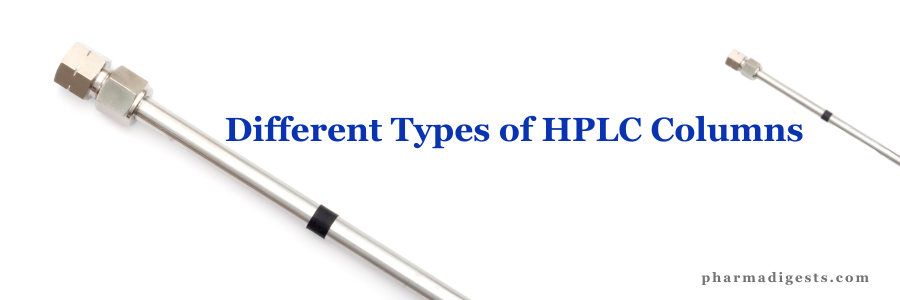HPLC

Why Are Phosphate Buffers So Popular in HPLC?
If you work with HPLC chances are you’ve used phosphate buffers. But why phosphate? What makes them so widely trusted? Let’s find out why? 1. Excellent pH Control Phosphate has three dissociation constants (pKa) values: This allows effective buffering across a broad pH spectrum. This is essential for controlling the ... Read More

What Should Flow Through HPLC Column?
What Should You Flow, and What Shouldn’t in HPLC? It Depends on Your Column! What you flow, what you avoid flowing, and in what order, all depend on your column’s stationary phase and physical parameters. Let’s break it down scientifically: Stationary Phase Chemistry 1. Reversed-phase columns (like C18): 2. Normal-phase ... Read More

Troubleshooting in HPLC | A Detective Game in the Lab
Even the best HPLC methods sometimes run into trouble. Poor peak shapes? pressure spikes? incorrect retention times? You need to identify define the problem, define which component(s) may be causing it, then solve it. This process is called troubleshooting. It’s an art as much as it is a science. Think ... Read More

The Secrets of Good Peak Shape in HPLC
Achieving good peak shape in HPLC is essential for accurate quantitation, improved resolution, and extended column lifetime. A well-shaped peak is symmetrical, with a tailing factor of ~1.0, high efficiency, and narrow peak width. Key Factors Influencing Peak Shape Column Selection & Chemistry Silica Purity & Acidity: Specialized Phases: Mobile ... Read More

Ways to Extend the Lifespan of C18 Columns & Guard Columns
Use a Guard Column Filter and Degas Mobile Phase Use Proper pH and Buffer Conditions Regular Column Flushing Avoid Prolonged Exposure to Aqueous Buffers Inject Clean Samples Optimize Flow Rate and Pressure General Precautions Before Cleaning Initial Rinse (Removing Buffer and Salts) Purpose: To remove any buffer salts that may ... Read More

Mastering the Art of Peak Integration in HPLC
Peak integration in High-Performance Liquid Chromatography (HPLC) is more than just a routine step—it’s the bridge between your experiment and the data-driven decisions that follow. Every peak tells a story, and accurate integration ensures you’re interpreting it correctly. Why is Peak Integration Crucial?The area under the curve (AUC) of a ... Read More

Difference Between C8 and C18 Columns
C8 and C18 are both types of reverse-phase chromatography columns, but they differ in their: Carbon chain length: Hydrophobicity: Retention characteristics: Separation range: Column selectivity: In summary, C8 columns are used for smaller, more polar molecules, while C18 columns are used for larger, more non-polar molecules. The choice between C8 ... Read More

Base Line Noise in HPLC
While performing HPLC analysis with an existing method, sometimes we will observe more base line noise. However, we won’t observe that scenario previously. The major probability due to: About dirty mobile phase: Grade of organic solvet used for analysis. Especially In case of THF is there in mobile phase we ... Read More

Role of pKa and pH Values in HPLC
One of the critical factors influencing the success of an HPLC analysis is the control of pH, which directly impacts the ionization state of analytes. The pKa value of a compound, indicating its acid dissociation constant, plays a pivotal role in this process. pKa: A Key Parameter The pKa value ... Read More

Different Types of HPLC Columns in Pharmaceutical Analysis
In High-Performance Liquid Chromatography (HPLC), the choice of column is crucial for successful separation and analysis. Let’s explore the different types of HPLC columns: Normal Phase HPLC Columns Stationary Phase: These columns have a more polar stationary phase than the mobile phase. Silica gel, a polar material, is commonly used ... Read More

Qualification of HPLC | A Complete Guide
The HPLC qualification process consists of four parts: Design Qualification (DQ) Design qualification (DQ) describes the user requirements and defines the functional and operational specifications of the instrument. It should ensure that instruments to be purchased have the necessary functions and performance that will enable them be suitable for the ... Read More
